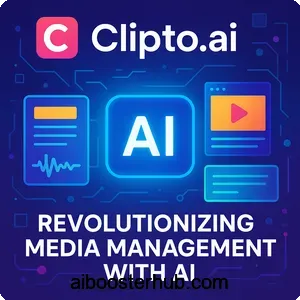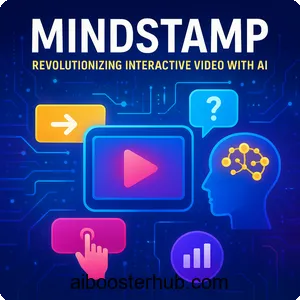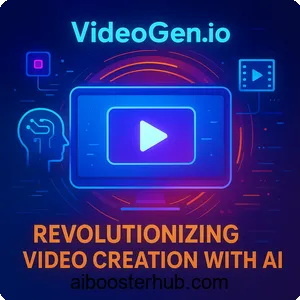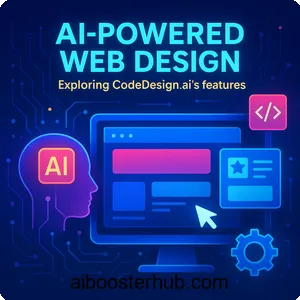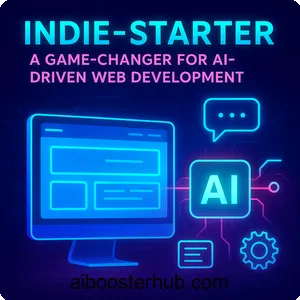Draw3D: Transforming sketches into photorealistic masterpieces
This article dives into the innovative world of Draw3D, an AI-powered platform that transforms sketches into photorealistic images and 3D models. Designed for artists, designers, and creators, Draw3D simplifies the creative process with its intuitive interface and advanced AI capabilities.
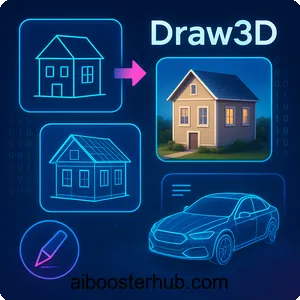
Content
Toggle1. Introduction to Draw3D
What is Draw3D?
Draw3D is an AI-driven platform that empowers users to convert hand-drawn sketches into photorealistic images and 3D models with ease. Accessible via draw3d.online, this tool leverages cutting-edge artificial intelligence to bridge the gap between imagination and reality. Whether you’re a professional artist, an architect, or a hobbyist, Draw3D simplifies the process of turning rough sketches into polished, lifelike visuals. Its user-friendly interface and powerful AI algorithms make it a standout in the realm of creative tools, offering a seamless experience for users of all skill levels.
The rise of AI in creative design
The integration of AI into creative workflows has transformed industries, from graphic design to architecture. AI tools like Draw3D are at the forefront of this revolution, enabling creators to produce high-quality visuals without the need for extensive technical expertise. By automating complex rendering processes, Draw3D allows users to focus on creativity while the AI handles the heavy lifting. This synergy between human imagination and machine precision is redefining how we approach digital art and design, making tools like Draw3D essential for modern creators.
Why Draw3D stands out
Unlike traditional design software that requires steep learning curves and powerful hardware, Draw3D is accessible directly through a web browser, eliminating the need for downloads or installations. Its AI-powered engine delivers photorealistic results in seconds, making it a game-changer for those seeking efficiency without compromising quality. Additionally, Draw3D’s versatility caters to a wide audience, from animators crafting lifelike characters to product designers visualizing prototypes. Its ability to transform simple sketches into professional-grade visuals sets it apart in the crowded AI tool market.
2. Key features of Draw3D
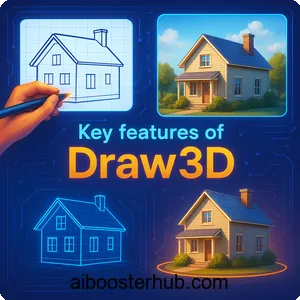
Sketch-to-photorealistic transformation
At the core of Draw3D is its ability to convert basic sketches into photorealistic images. Users can upload a hand-drawn sketch, and the platform’s AI analyzes the lines, shapes, and textures to generate a highly detailed, realistic image. This feature is particularly valuable for artists who want to see their concepts come to life without spending hours on manual rendering. The AI ensures that the output retains the essence of the original sketch while enhancing it with lifelike details, such as realistic lighting and textures.
3D modeling capabilities
Beyond 2D images, Draw3D offers robust tools for creating 3D models from sketches. This feature is a boon for designers working in fields like architecture, gaming, or product design, where 3D visualization is crucial. The platform’s AI interprets the sketch’s structure and generates a 3D model that users can manipulate, rotate, and refine. This streamlined process eliminates the need for complex 3D modeling software, making Draw3D an accessible option for beginners and professionals alike.
User-friendly interface
Draw3D’s intuitive interface is designed to accommodate users of all experience levels. The platform features a clean layout with straightforward navigation, allowing users to upload sketches, adjust settings, and generate results with minimal effort. Interactive tutorials and tooltips guide newcomers through the process, while advanced users can customize parameters to achieve precise outcomes. This balance of simplicity and flexibility ensures that Draw3D is approachable yet powerful.
Cloud-based accessibility
As a web-based tool, Draw3D operates entirely in the cloud, enabling users to access it from any device with an internet connection. Whether you’re using a laptop, tablet, or smartphone, Draw3D delivers consistent performance without requiring high-end hardware. This accessibility makes it ideal for creators on the go, allowing them to work on projects from anywhere without worrying about software compatibility or storage limitations.
Versatile output formats
Draw3D supports multiple output formats, including JPEG, PNG, and 3D file types like OBJ and STL. This versatility allows users to export their creations for various purposes, such as digital portfolios, 3D printing, or integration into other design software. The platform also offers options to adjust resolution and file size, ensuring that outputs meet specific project requirements.
3. Use cases for Draw3D
Enhancing artwork for artists
For digital and traditional artists, Draw3D is a powerful tool for elevating sketches to professional-grade artwork. By transforming rough drawings into photorealistic images, artists can create portfolio-ready pieces without extensive manual editing. This is particularly useful for concept artists who need to present polished visuals to clients or collaborators quickly.
Architectural visualizations
Architects and interior designers can use Draw3D to create stunning visualizations of their designs. By uploading sketches of buildings, floor plans, or interiors, users can generate photorealistic renderings that help clients visualize the final product. This capability streamlines the design process, allowing architects to communicate their vision effectively without relying on complex rendering software.
3D animation and character design
Animators and game developers benefit from Draw3D’s ability to create lifelike characters and environments from sketches. The platform’s 3D modeling tools enable users to craft detailed models that can be animated or integrated into game engines. This is especially valuable for indie developers or small studios looking to produce high-quality visuals on a budget.
Product design and prototyping
Product designers can leverage Draw3D to visualize prototypes in a realistic manner. By converting sketches into 3D models, designers can explore different angles, materials, and finishes before moving to physical prototyping. This not only saves time but also allows for early feedback and iteration, improving the overall design process.
Educational and hobbyist applications
Draw3D is also a fantastic tool for students, educators, and hobbyists. Art students can use it to experiment with photorealistic rendering, while educators can incorporate it into lessons to teach design principles. Hobbyists, meanwhile, can explore their creativity without needing advanced technical skills, making Draw3D a versatile tool for personal projects.
4. Benefits of using Draw3D
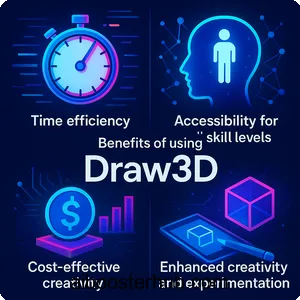
Time efficiency
One of the most significant advantages of Draw3D is its ability to save time. Traditional rendering and 3D modeling processes can take hours or even days, but Draw3D delivers results in minutes. This efficiency is a game-changer for professionals working under tight deadlines or hobbyists who want to see quick results.
Accessibility for all skill levels
Draw3D democratizes design by making advanced AI tools accessible to everyone. Beginners can achieve professional-quality results without prior experience, while seasoned designers can use the platform to streamline their workflows. This inclusivity broadens the tool’s appeal, making it a valuable asset for diverse creative communities.
Cost-effective creativity
By eliminating the need for expensive software licenses or high-end hardware, Draw3D offers a cost-effective solution for creators. Its cloud-based nature means users don’t need to invest in powerful computers or specialized programs, making it an affordable option for individuals and small businesses.
Enhanced creativity and experimentation
Draw3D encourages users to experiment with their ideas by providing instant feedback on sketches. The ability to see photorealistic or 3D versions of a concept inspires creativity, allowing users to explore new styles, textures, or perspectives without committing to lengthy workflows. This fosters a more dynamic and innovative design process.
Seamless integration into workflows
Draw3D’s versatile output formats and cloud-based accessibility make it easy to integrate into existing workflows. Whether you’re exporting images for a presentation, 3D models for a game engine, or visuals for a client pitch, Draw3D fits seamlessly into various creative pipelines, enhancing productivity and collaboration.
5. How to use Draw3D: A step-by-step guide
Step 1: Accessing the platform
To get started, visit draw3d.online using any web browser. No downloads or installations are required, as the platform operates entirely in the cloud. Create an account by signing up with your email address, which grants access to the full range of features and tools.
Step 2: Uploading your sketch
Once logged in, navigate to the upload section of the platform. Draw3D accepts various file formats, including JPEG, PNG, and PDF. Ensure your sketch is clear and well-defined to achieve the best results. For 3D modeling, sketches with distinct outlines and structural details work best.
Step 3: Customizing settings
After uploading your sketch, you’ll have the option to adjust settings such as output type (2D photorealistic image or 3D model), resolution, and style preferences. For example, you can choose between realistic, stylized, or abstract rendering modes. Advanced users can fine-tune parameters like lighting and texture for more precise results.
Step 4: Generating the output
Click the “Generate” button to let Draw3D’s AI process your sketch. The platform typically takes a few seconds to analyze the input and produce a photorealistic image or 3D model. You can preview the result directly on the platform and make adjustments if needed.
Step 5: Downloading and sharing
Once satisfied with the output, download it in your preferred format (e.g., JPEG, PNG, OBJ, or STL). Draw3D also allows you to share your creations directly from the platform, making it easy to showcase your work on social media or collaborate with others.
Step 6: Exploring advanced features
For users looking to dive deeper, Draw3D offers advanced tools like texture mapping, 3D rotation, and multi-angle rendering. Experiment with these features to refine your models or create variations of your original sketch. The platform’s interactive tutorials can guide you through these advanced functionalities.
6. Why Draw3D is a game-changer for AI-driven design
Empowering creators with AI
Draw3D exemplifies how AI can empower creators by simplifying complex processes and delivering professional-quality results. Its ability to transform sketches into photorealistic images and 3D models opens up new possibilities for artists, designers, and hobbyists, making high-end design accessible to all.
Future potential of Draw3D
As AI technology continues to evolve, Draw3D is poised to introduce even more advanced features, such as real-time collaboration, enhanced texture generation, and integration with virtual reality platforms. These developments could further solidify its position as a leading tool in the AI-driven design space.
Inspiring a new era of creativity
By removing technical barriers and fostering experimentation, Draw3D inspires a new era of creativity. It allows users to focus on their ideas rather than the mechanics of design, encouraging innovation and artistic expression. Whether you’re a professional or a beginner, Draw3D empowers you to bring your imagination to life.
7. Conclusion
Draw3D is more than just an AI tool—it’s a gateway to limitless creative possibilities. Its intuitive interface, powerful features, and versatile applications make it a must-have for anyone looking to elevate their sketches into photorealistic masterpieces or 3D models. From artists to architects, Draw3D is transforming the way we create, proving that AI is not just a tool but a partner in the creative process. Visit draw3d.online today to explore its capabilities and unleash your creativity.

